Stealing the show: As TV goes digital, will linear or digital trading methods and metrics prevail?
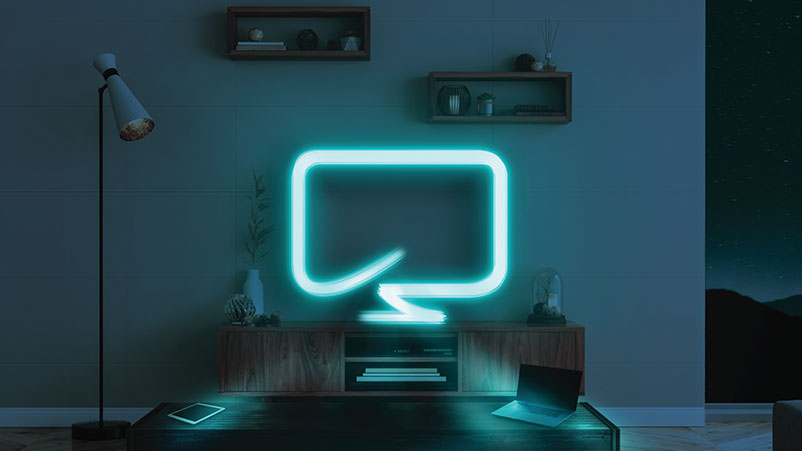
Nestle's Head of Media, Content and Data, Antonia Farquhar: "We know all screens are not equal and different consumers have different behaviours."
As TV and video converge, Nestlé’s switch to a cross-screen planning strategy is enabling more flexibility, according to Antonia Farquhar, head of media, content and data at the FMCG giant. Yet across industry, trading and measurement of linear and digital remain largely segregated. Will BVOD ultimately be bought in digital fashion? Amobee managing director, Liam Walsh, thinks it will bend to linear TV’s terms, because that’s where the money is. UM chief media partnerships officer, Nicole Prior, disagrees. Seven chief revenue officer, Kurt Burnette, says buyers are already at risk of missing the mark with broadcaster audiences streaming on connected devices. Hearts & Science chief digital officer, Isabelle Dunn, expects keener mass pricing and premium addressable niches. There's a lot at stake. Read on.
TV tussle in Virtual Reality
Welcome to the virtual world, playing out in the circa $4bn TV business, as we speak. Whether digital or linear-led, most in this debate agree getting hold of a new, combined broadcast and digital TV audience currency, VOZ, will help bring more marketing dollars into broadcaster streaming services. For the non-TV types, Virtual Australia, or VOZ, is a combined database due for market launch in early 2021 which includes "total viewing" of broadcast TV and digital audiences on connected devices, for the first time. VOZ reporting includes a small but fast-growing $200m segment of mostly ad-supported streaming services like 7Plus, 10Play, 9Now, ABC iView (no ads) and SBS On Demand - media insiders define them as Broadcast Video On Demand, or BVOD, and it's tipped to up the pressure on YouTube, Facebook and social video. Maybe.
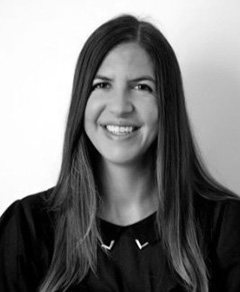
Nestle's Antonia Farquhar: TV delivers better long-term ROI
One plan, all screens
Nestlé switched to an all screen strategy two years ago, unifying planning and buying across cinema, TV and programmatic video. Antonia Farquhar, head of Media, Content and Data at Nestlé, says it is paying dividend, with the brand able to react more flexibly in a bid to hit all key audience segments when, where and how they are viewing.
“We put in about 30 briefs a year across our different brands, so we have an overall screen strategy. But obviously that is flexed and adapts as the different briefs and the different objectives come through. We know all screens are not equal and different consumers have different behaviours. So that's how we adapt that base strategy across our business,” she says.
Before making the shift to an all screens strategy, Farquhar says the media team had to ensure marketing “understood that we were still going to get that same level of reach and frequency to deliver on awareness goals.”
That requires a “much more continuous approach to our screens-based strategy, because we know the balance of TV versus short form video is really different in terms that long and short ROI impact,” she says. “It’s a real balance to ensure we are getting short term ROI balanced with long through screens like TV that deliver that in a better way.”
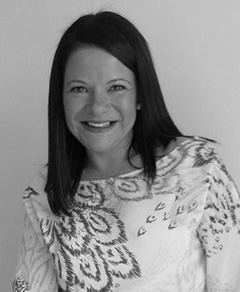
UM's Nicole Prior: Planning screens "holistically" more important than who executes
Converging TV, disparate approaches
Nestlé may be stealing a march with its unified strategy, but trading and measurement of linear and digital remains largely segregated across industry. But as BVOD starts to hit hockey stick growth, the question of how converged TV and digital video is ultimately planned and traded – and by whom – becomes a more pressing issue.
Do TV planners and buyers need to acquire digital skills and methods, or does the digital sector need to learn the TV trade? And what are the trading frameworks?
According to UM Chief Media Partnerships Officer, Nicole Prior, agencies are hedging their bets by cross-skilling both teams.
“For us, it's probably less around the actual execution, more around the planning of the screens holistically,” she says. “So I don't think there is a one size fits all [approach], as long as they're planned and measured holistically together on whatever platform it is.”
In terms of agencies combining digital and linear buyers, Prior says the picture is mixed, with “pockets being integrated really well”, but also “complete separation” of teams.
She says that is hardly surprising, given fragmentation of key buying currencies.
“The Holy Grail is planning and buying on one set of audience data, and on a common metric as well. When those elements are still quite separate, naturally the buying execution, or where it might sit, may be different as well.”
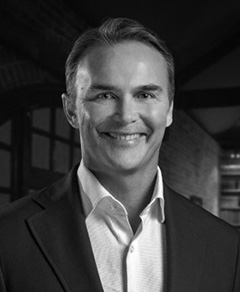
Sevens Kurt Burnette: Linear TV or Digital to dominate? "It will land in the middle"
Non binary: buy it your way
Seven’s chief revenue officer, Kurt Burnette, thinks it will be some years before buying teams converge. He says that is no bad thing and is unconvinced any single approach will become all encompassing.
“I think it's important that we allow people to buy the way that they want to buy, and to buy the way they set up for,” he says.
Asked whether digital imposes its structures on the TV sector or vice versa, he plays a diplomatically straight bat.
“I think it will land in the middle,” says Burnette.
“We've taken the view that it's ‘plug and play your way’; how do you want to be trading and dealing with audiences? If you buy into the idea that video audiences across broadcast, in BVOD and even short-form video have value, then as long as the metrics can bring them together, you should be able to buy together or separately,” he says. “I believe that'll be the case. For the next few years, you will be able to buy television the way you do now. You'll be able to buy digital the way you do now. Very soon you’ll be able to buy it together in ways you currently can’t.”

Amobee's Liam Walsh: Broadcast clout will KO digital TV planning
Follow the money: Why linear will run the show…
Amobee Managing Director, Liam Walsh, disagrees with Burnette’s suggestion that digital and linear will meet halfway. He believes digital TV will be traded on linear TV terms – because that’s where the money is.
“To be really pragmatic about it, the bulk of the money is in linear - something like $500bn globally - and there are 30 to 40 years of measurement principles. So as BVOD grows, it kind of has to fit inside a linear framework,” says Walsh.
“That linear framework has different language and different principles. It likes fixed price and digital doesn't like fixed price very much. It believes in GRPs and TARPS. It's got a lot of information on reach and frequency and actually values low frequency. Digital doesn't really care about frequency or tends to be medium or high. So I think they're quite different things. But because the money's in linear, I think BVOD will literally have to integrate inside of linear,” he suggests.
“So I don't think it lands in the middle. I think it lands with linear-led planning and digital probably moving [to] having a heavier workload in execution.”
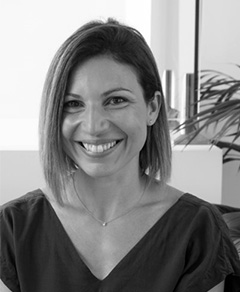
Hearts & Science' Issy Dunn: Broad digital TV demos will get cheaper like linear TV; targeted, addressable audiences will cost more
… Alternatively, why it won’t
Isabelle Dunn, chief digital officer at Hearts & Science agrees with Amobee’s Walsh.
“That's exactly where I see things going. It's going to be more TV buyers doing the planning and the negotiations, and activation… obviously managing both. We already buy BVOD programmatically and that makes sense to sit with the activation teams.”
But UM’s Nicole Prior thinks differently.
“I disagree. I have bought a lot of linear TV in my career and also digital. And I think the two are different and they should be treated differently,” she says.
“Linear TV is a really powerful mass medium, which then has a digital capability in BVOD that allows you to access a different audience and targeting at scale. And I think that the TV buyers are certainly welcoming digital metrics, currency and targeting capability.
“So as everything moves into platforms sooner or later, I think that it will tip the other way. I think linear TV will be bought and traded on a platform at some point in a digital fashion.”
But Prior says there are some major hurdles in terms of currencies, measurement and metrics. She says VOZ, whenever it arrives, will play a key role.
“When you can start to trade linear TV beyond a gender and age group, that is one of the key elements that will certainly help bring the two worlds closer together. But more important is the measurement piece, and being able to loop it all back to a business outcome.”
“So, yes, the Holy Grail is to have the same audience, same buying currency, all measured back to one so I can work with Antonia [Faquhar at Nestlé] and we know exactly what channel is driving the greatest ROI - because it's bought and measured in the same way,” she says. “But that is probably still a long way away.”
Leave sponsorships alone, digitise spots and dots
Seven’s Burnette points out that sponsorship deals are already bought and sold by the same teams across broadcast, BVOD and social – an example of a cross-screen success story.
Those deals are led by TV buyers, and UM’s Prior thinks sponsorship and integration packages should remain within their domain.
“When we're talking a pure reach spots and dots play, to have it all in one single platform to be measured and traded with combined reach and frequency between the two, would be amazing,” she says. “But there is still a need for the channel to be utilised and maximised for what is one of its greatest opportunities [i.e. sponsorships].”
Nestlé’s Farquhar agrees.
“I think sponsorship and integration absolutely should be planned the way it is at the moment to ensure you're getting the maximum value and a real partnership between the brand and the property itself,” she says.
“I think there's an opportunity to move fast with the spots and dots piece to make that more integrated and holistic with our planning - which would hugely help in making it traded on a more real time basis.”
Don’t give it all away
Amobee’s Liam Walsh believes the digital sector taking the lead on BVOD would be bad news for the broader industry. Instead, the TV sector taking the lead “brings in the big brother of linear television, which is a tonne of money,” says Walsh.
“It actually might be better for the industry for that to happen, purely because once you move into the digital video world, 80 per cent of that inventory sits in one place.” he adds. “I don't think anyone wants a world where there's one supplier of any product. Whereas when you converge linear with BVOD, then you bring a lot of competition to the table. Which is better, I think, for everyone.”
UM’s Prior is not so sure. “Any planner who will stack a social video platform to a BVOD platform like-for-like doesn't know what they're doing,” she says.
Instead, agencies and brands are creating new metrics, such as ‘effective CPMs’, which take in other known data to try and level up and measure like-for-like across screens.
However, she returns to VOZ as a key stepping stone in bringing together linear TV and BVOD faster. The question is, when will VOZ arrive?
From missing the mark to spotting opportunity
VOZ will be in market “before the end of the year,” says Seven’s Kurt Burnette. “We'll certainly be starting 2021 with a lot of those metrics”. But he suggests buyers must also better understand how viewing is taking place.
“I'll throw out a stat. Last night on Seven, there was 30 million minutes of streaming across VOD and live. 70 per cent of that was on connected televisions. The remaining 30 per cent was on mobile, laptop and other devices. Yet the investment would be the complete opposite of that,” says Burnette.
“So we need to get all the tools in the hands of the people that need them.”
As BVOD starts to mature, Hearts & Science’s Isabelle Dunn spies opportunity for those that can react to the types of situations cited by Burnette.
“When we see nights like that, with such large audiences on connected TVs, how do we ensure that we can manage inventory and smooth out the peaks and troughs? How can we make sure that we can capitalise on increases without necessarily impacting too much on frequency? For me, that is quite a big opportunity.”
However, she thinks a mature market with increased supply will ultimately lead to evolved pricing models.
“I think we're going to have a situation where more mass, broad demo buys become cheaper, more in line with linear television. And then you're going to have, by contrast, the targeted addressable audiences at a cost premium,” says Dunn.
Old school metrics ‘will unlock ad growth’
To reach that level of maturity, Amobee’s Liam Walsh reiterates that BVOD, growing at 30-40 per cent CAGR for the last couple of years, will need to bend to TVs metrics to maintain that rate, or risk “bumping up against the ceiling of measurement”.
“As an advertiser, you tend to go, ‘I really want to be in this channel because all the users have moved to it, but the measurement doesn't integrate into other stuff that I do’.”
As such, Walsh thinks a broad TV measure, such as people 25-54, will need to form the base on which digital metrics can then be layered.
“Without that consensus measurement, it’s just hard to keep growing at 30 to 40 per cent.”
Which is why Walsh thinks TV metrics and frameworks should ultimately win out over digital in congerged TV, with “everything running off OzTAM for measurement … whether or not you use that word ‘VOZ’… in the next 12 to 24 months.”
